American Presidential Election

The Importance
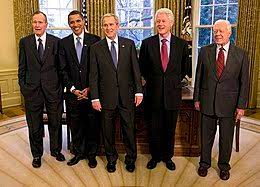
The United States of America is a developed country, and its economy accounts for approximately a quarter of the global GDP. It stands first among the military might and has more billionaires as compared to elsewhere. Being the President of such a large and powerful country with varied diversity and culture is a significant achievement. The American President is regarded as the most powerful and respected person in the world.
The President in America has all the powers to formulate important decisions that not only relate to the well-being of their own citizens but also to maintain peace across the world. Other countries alter their external affairs based on the candidate that gets elected as President of America.
America is among the first country that has a written constitution. The constitution of other countries attaining independence much later is influenced by the American Constitution. The process of electing the American President itself is very interesting with filled with hurdles. People across America and the world should be aware of this process.
The American constitution follows the Presidential System of Government, in which the President is the chief executive and is elected indirectly by the people. The tenure of an elected President in America is four years. The only way to remove an American President is through impeachment.
From 1789 till today, no President has been removed, by impeachment. Though this process was tried on three occasions previously, it failed every time to garner enough support. Thus removing an American President is impossible during their term making them all the more powerful.
Relevance of Post
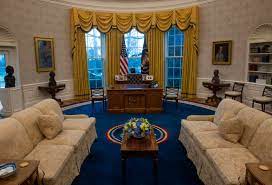
The selection of the right candidate for the prestigious post of President is all the more important because the person sitting on that post cannot be removed easily. Closely linked to the post of President is the post of Vice President. In the American Constitution, the post of Vice President is also powerful. On 4th March 1789, the American constitution came into effect as George Washington took the oath as the first President of America.
The Constitution documented that during the sudden demise of the President, the Vice-President would discharge the duties of the President. However it failed to lay out the process of how long the Vice-President would discharge the duties acting as President, is it until the new President gets elected?
This situation arose in the year 1841. William Henry Harrison was the serving American President (9th President). On April 4, 1841, President Harrison died without completing his term. John Tyler was then the Vice President of America. Due to the sudden demise of the 9th American President, John Tyler started discharging the duties of President.
There was a debate among government officials, about whether the designation on the official documents should be in the name of Vice-President or the President. They came up with a solution and started mentioning ‘Acting President’ under his signature.
John Tyler took a firm stance that he would not sign the papers that mentioned him as ‘Acting President. The government later agreed to his views and from then it is a tradition in America that Vice-President becomes the actual President till the completion of the term in case of the sudden demise of the President.
This sudden promotion of Vice President to President also had its fair share of mishaps. During the Second World War, Franklin D. Roosevelt was the 32nd American President. His sudden demise on 12th April 1945, made Vice-President Harry S. Truman, the 33rd American President. The order for dropping nuclear bombs on the cities of Hiroshima and Nagasaki was signed by him.
Later in 1967, by the 25th amendment, the American Constitution included that re-election will not happen until the time of the present Presidential term expires in case of the sudden demise of the President the Vice President will be the President. Thus the post of Vice-President is also very important.
The election of the President of America is a major world event that happens every four years. It is a world event because the people of America participate in electing the President, while the entire world watches the event with intense focus.
Presidential Terms
The Constitution mentioned the term for a President to be of four years, however, it was not documented that after the completion of the first term can the same President apply for a second term. As it was not documented in the constitution, it was presumed that they can.
George Washington was the leader of the American war of Independence, extending from 1775 to 1787, which liberated 13 American States in the eastern part of the America from British. After independence, he was the first and the most popular choice of the American people as the President. His first Presidential term extended from 1789 to 1793.
After 1793, during the second Presidential election, George Washington was again elected as a popular leader for the second term, which extended till 1797. People wanted him to run as a Presidential candidate for the third term as well, but he declined to stand for the third term, stating that other members should also be given chance.
It was George Washington, who set the precedence for a maximum of two terms as President so that new people also get a chance to lead the country. Abraham Lincoln was one such great President of America and a popular mass leader, who was President for two terms. During the beginning of his second term, he was assassinated by an assailant. Thus in America, most Presidents remain in office for one term, and the popular among them extend their period as President to two terms.
Though this trend also has exceptions, a popular American President Franklin D. Roosevelt became the 32nd American President and he remained as President for four terms. He became President during the economic depression and brought about changes to make America economically stable in 1933.
Due to his great popularity, he again became President for a second term in 1937. During this term, the Second World War broke out. America wanted to look like a stronger nation, so the government requested Roosevelt to contest the elections of 1941. He contested it and won the elections by popular vote.
The Second World War was not yet over, and America was involved as a major player in that war. The people wanted a strong government, so Roosevelt, contested and won the elections in 1945 again by popular vote. Roosevelt was the lone American President who participated in and won the Presidential Elections four times. He died just at the beginning of his fourth term as President on 12 April 1945.
Few of the senators were unhappy about the office of President being occupied by a single person over 12 years. In the year 1951, by the 22nd amendment of the Constitution, it was mentioned that the maximum number of terms a President can hold his office is two terms.
In case a President dies during his tenure, and Vice President takes over as the President and has completed two years, then that would be treated as one term. Such a candidate would be entitled to contest only one more term as President.
Election Process
American President Election is an indirect process. An indirect process is one, where people vote for a candidate who, in turn, participates in the Presidential election. On the other hand, a direct process is one where people directly vote for the person and elects them.
The American people vote to elect the members of the Electoral College. The elected member of this College then participates in Presidential Election. The election of an American President is a complex process that begins almost one and half years before the election of the President traversing through different stages.
Announcement of Intention
During March/April/May, the candidates willing to run for the Presidential Election announce their intentions. Such candidates, irrespective of political parties, who consider themselves to be skilled and educated enough to run for the post of President, express their willingness to become a candidate and the number of such persons can, vary from 25 to 40.
After their announcement, people formulate their opinion about the candidates. Some candidates are liked by people instantly, while others get overlooked. This exercise provides the people of America to view the diverse pool of candidates in the fray for getting selected as President.
Primary and Caucuses
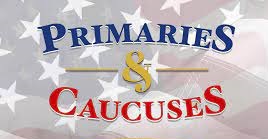
The next step is to select the right candidate for President. It so happens that within a month of the announcement of intentions, few of the aspirants realize that they would not be able to stand against a potentially stronger candidate; hence they withdraw their candidature intentions fearing embarrassment.
It may so happen that there may be few people remaining in the fray for the post. The selection of a suitable candidate for the party is done through Primaries and Caucuses. There are 50 States in the USA, some States have Primaries, some States have Caucuses, and some States have both of them. There are two main parties in America, the Republican and the Democrats parties.
Let us assume that five people from Republican Party are still in the race. In Caucuses, people of the same party meet in clubs, restaurants, and various other places holding seminars to discuss the best candidate from their party. So Caucuses are arranged by political parties for discussion among party members to decide upon the best candidate.
Primaries are the step taken by the respective State in deciding the right candidate. They can discuss with the people of that State, and people can express their opinion on candidate selection. The Primary and Caucuses also decide on the name of the nominees nominated to attend the Presidential Nomination Convention on the behalf of State or the Party.
This entire process takes about one year. Here initially through informal discussions and later through formal discussions the candidate’s name and the nominees that would participate in the Presidential Nomination Convention from that State are selected. This is the most interesting part of the elections, where arguments for and against the candidate are made so that the right candidate gets selected.
From July to September, the main political parties convey the Presidential Nomination Convention. The selected nominees from the State attend this convention and discuss and debate the candidature of the candidates for the Party based on the rules prescribed in the party.
After much debate and discussion, the nominees from each State vote to select the right candidate. It must be noted here that during Primaries and Caucuses each Party/State decides upon the candidate of their choice, and these nominees are pledged, voters.
After the first round of voting, it becomes clear who among the list of candidates from the party would be the nominated candidate of the party. But it may so happen that the results lay a brokered mandate. In the case of brokered mandate, the nominees are freed from the pledged support and can vote based on their choice for any other candidate.
After much debate, discussion, and finally voting, the name of the candidate nominated by the party is announced. The nominated candidate gives their speech of acceptance. This practice takes place for all political parties based on their rules. After the end of the process of the Presidential nomination convention, each party declares the name of the candidate for the President of America.
The Election Campaign
Around September, each political party officially declares the name of the candidate running for the post of President from their party. The end of September to the beginning of November is the period of the Presidential election campaign.
The American constitution is so unique that it had already documented the election date. The election date is Tuesday which falls after the first Monday in November. If it so happens that the first Tuesday falls on the 1st of November, the election would not be held on that day, rather it will be hosted on the date on which Tuesday falls after the first Monday of the month.
During the campaign, each candidate organizes seminars where they share their thought on varied topics as to how they want to improve the policies of America. One important part of their campaign is the Presidential debates. All the Presidential candidates meet on a common forum and debate on different common topics.
From past experiences, it was observed previously that a lot of confusion and misunderstandings happen if the elected President and Vice President belong to different parties. So to avoid all these problems President and Vice-President of the same party get elected by the voters. As the President and Vice President representing the same party get elected hence Vice-Presidential debates are also part of the campaign.
These Presidential debates are organized by an NGO named Commission on Presidential Debates. This NGO is funded by both the Democrats and Republicans, and their primary role is to organize the Presidential debates between the Presidential candidates.
These debates are telecast live so that voters can make up their minds during voting by understanding the mindset of the person and the stand they take on varied topics. During every election campaign, this organization conducts three Presidential debates and one Vice- Presidential debate.
The Presidential candidates are judged by their responses, different organizations conduct popularity polls among American citizens before the debate and after the debate for the candidate. A sudden rise in popularity demonstrates the winner of the debate.
States Coloration
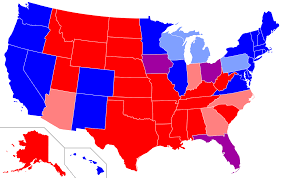
In America, there are mainly three kinds of States based on the party they support. They are Red States and Blue States collectively known as safe States. The Red States are the ones that generally favour the Republican Party, like Texas; likewise, the Blue States are the ones that generally favour the Democratic Party, like California.
Some States are called Purple States that can vote for any party hence they are also known as Swing States like Georgia. The strategies of the political parties are mainly focused on swaying the voters of these Purple States. They know that their safe States would not go against their candidate, and irrespective of the effort they put into the safe State of the opponent, they will not be able to win it.
The Purple States are the ones that play the decisive role in any Presidential Election. Hence the major chunk of the Presidential campaign is designed for these Purple States. The Presidential debates are viewed by millions over television and followed on social media. As Election Day approaches, the campaign gains momentum until finally, it stops before the Election Day.
Conduction of Election
Congress is the name of the legislature in America. It has two houses, the House of Representatives and the Senate. The term of a member in the House of Representatives is two years. The number of seats a State has in the House of Representatives depends on the population of the State. There are 435 members at present in the House of Representatives.
A State like Alaska, which is a large State in terms of land but has only one member, while a State like California, which is smaller in terms of area as compared to many other States has 53 members in the House of Representatives.
The Senate has 100 members, and the term of a member is 6 years. It contains two members from each State, and that number is fixed and cannot be changed based on area or demographics so that equal representation from each State can be achieved without discrimination.
The composition of the Senate is such that after every two years one-third of the members of the Senate keep retiring and new members get elected in the Senate from different States. All these elections are organized on Election Day.
An American citizen entering the pooling booth not only elects for President or Vice President but also for members of States representing in the House of Representatives and member of the Senate if the term of the member of that State is due to expire during that period.
After two years, the terms of the members in the House of Representative expires, hence the people of America vote for electing the members of their State that will represent them in the House of Representative and member of the senate if the term of the member of that State is due to expire during that period.
Election Process in States
America has 50 States, and each State has its own Congress to formulate the decisions for the State. The Congress is divided into two houses. They are the House of Representatives and Senate. The person governing the State is called the Governor similar to the President, and Lieutenant Governor similar to the Vice President. Nebraska is the only State that has only one house and not two houses.
To curtail the election expenses and to better utilize citizens’ time, the elections for the different posts of States that are due are also held on the same Election Day. So the citizen of America not only vote for President or Vice-President and the member representing their State in the House of Representatives for the central government they also vote for electing the Governor/Lieutenant Governor and the member of Congress for their States if their term has expired.
The post of Lieutenant Governor is prevalent in about 45 States while 5 of the States do not have this post. They have a different mechanism of governance based on their constitution.
Electoral College
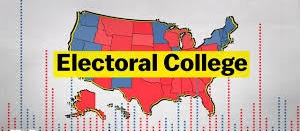
To better understand the procedure of Election Day for the President of America, let us understand the term Electoral College. The people of America do not directly vote to elect the President of America, rather they vote to elect the members of the Electoral College of State. The members of this Electoral College then vote for the Presidential candidate.
The number of votes each State has depends upon the number of members of this Electoral College. The number of members of a State is decided by the addition of the number of members of the House of Representatives for that State and the number of members of the Senate for that State. As an example, California has 53 members in the House of Representatives and 2 members in the Senate, thus the number of votes from California is 53 + 2 =55.
Likewise, other States have different of number votes. Seven such States has only one member in the House of Representative, but every State has two members in Senate, thus the minimum number of votes that a State can have is three, like Alaska.
The Electoral College should have total members of 535, 435 from the House of Representatives and 100 Senate. Surprisingly there are 538 members of the Electoral College. To understand how these extra three seats are part of the Electoral College, a study of the physical boundaries of America is required.
Physical Boundaries
America, not only comprises mainland America and Alaska but also many islands spread over the ocean. Like Guam Island, US Virgin Islands, Puerto Rico, and many other territories. These territories are not given the status of a State; hence the inhabitants of these territories cannot participate in the election of the President of America despite being a citizen of America.
Only the citizens of States belonging to America can participate in the Presidential Elections. A tussle over the recognition as States continues between these territories and the Government of America. By the 22nd amendment of their constitution in 1959, Alaska and Hawaii were incorporated as new States in America.
Washington DC is the capital of America. As the name suggests it is a District of Columbia. This small district is governed directly by the Government of America and not by the State of Columbia, as it houses the Presidential office and residence apart from other important State buildings. This small district is not a State, hence voters of this State were not eligible to participate in Presidential elections.
The people of this district raised their voices against this injustice, stating that they are not eligible to vote in Presidential Election as Washington DC is not a State, however after the election President resides and assumes office in their district.
It was a valid concern; hence by the 23rd Amendment of the constitution in 1961, the people of Washington DC were given the right to vote in Presidential Elections. The minimum number of Electoral College members three is assigned for this territory which is directly under the Government of America and not under Columbia. This makes the number of Electoral College members to 538.
The Election Day
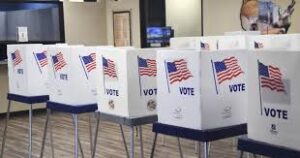
As America is a Federal country, so each States has their own set of rules and they select the members of Electoral College based on those rules. The numbers of Electoral College members are fixed for a State and depends upon the number of congressional districts, each district is represented by a member. The names of Electoral College member of a party is already decided in advance for a State.
A voter actually votes for electing the Electoral College member standing on behalf of the Presidential candidate. So the name in the voting list highlights the President and beneath it the Electoral College member’s name. If a Electoral College member wins the election, they are pledged to vote for the Presidential candidate on behalf of whom they have been elected.
This system of voting for the President first forming an Electoral College is confusing and has its own set of drawbacks. This makes the Election of American President more complex, thrilling and suspense because of the scenario prevalent in America that says ‘Winner Takes All’.
Winner Takes All

‘Winner takes All’ is a culture prevalent in America, and they are happy to follow the same criteria for the election of the American President. This system is prevalent in 48 States of America with the only exceptions being the States of Nebraska and Maine.
This system though makes the election of the American President interesting but at the same time it deprives a rightful popular candidate to lose the election. This can create a distinction between the popular choice candidate and the person getting elected as President.
A similar scenario was already witnessed by America in the 2016 elections when Hillary Clinton was the popular choice, but by this process, she was deprived of the number of Electoral College votes finally losing to Donald Trump. The percentage of votes received by Hillary Clinton was 48.2% while that received by Trump was 46.1% still Trump became the President.
Let us understand this process of ‘Winner Takes All’ with an example. The State of Texas has 36 seats in the House of Representatives and 2 in the Senate making a total of 38 members. So a maximum of 38 Electoral College members get elected by the voters. The first Presidential candidate (say ‘A’) acquires 55% of the vote share, so he should get 21 members out of 38 members and the remaining Electoral College member should vote for the candidate (say ‘B’).
In the ‘Winner Takes All’ process in this example; if candidate ‘A’ wins more than 19 seats in a State then he is entitled to win all 38 members of the State. So all the 38 members of the Electoral College supporting candidate ‘A’ for that State becomes part of the main Electoral College.
In the Presidential Election of 2016, after winning 48.2% of the Vote Hillary Clinton just managed to garner the support of 227 Electoral College members while Donald Trump was able to gain the support of 304 Electoral College members. Five such situations had already happened in the past, where the most popular candidate lost the election while the second popular candidate won it. Al Gore received more percentage of the vote but still lost to George Bush due to this process.
The States of Maine and Nebraska do not follow this process. Maine has 4 Electoral College members while Nebraska has 5 members. In these States, the Electoral College member winning the election becomes a member of the main Electoral College. This process looks more transparent and accurately helps in accessing the popularity of the Presidential candidate.
Thus on the day of the election, American voters cast their votes in selecting the Electoral College members from their State, who in turn are pledged to convey their support to the candidate nominated by the respective party.
Election of President
The members of the Electoral College are elected by voters of America, now it is the turn of these elected members of the Electoral College, to cast their pledged vote for the Presidential candidate of the respective party. This process happens on Monday after the second Wednesday in December.
From the election results of the members of Electoral College members and with the due process of ‘Winner Take All’, it becomes clear that who would be the President-elect still some last-minute suspense prevails.
The members of the Electoral College are pledged to cast their vote in favour of the Presidential Candidate for which voters have elected them. But defections do happen in American politics. Such Electoral College voters are called Faithless Electors, where an Electoral College member elected to support a Presidential candidate casts their vote in favour of another Presidential Candidate of a different party.
There is no prescribed punishment for such members who become Faithless Electors. However 29 such States have provisions to deal with such situations and a Supreme Court ruling to punish such persons based on State laws, but to date, nobody has been jailed for this breach of trust.
The scale of the punishment includes barring the member from being assigned to certain posts and likewise. The remaining 21 States do not even have any provision in their constitution to deal with this situation.
There have been 160 plus such incidents already reported. 70 such incidents took place in during one election around 1880 when the Presidential candidate died after Election Day but before the vote of the Electoral College resulting in such a crossover. Even in the Presidential Election of 2016, there were ten such faithless voters.
Thus the suspense at the last stage of the Presidential Election always remains, and even the meticulously planned campaign may fail. Though the record to date shows those faithless voters are not able to completely change the verdict of the elections.
The total number of votes of the Electoral College only matters for the election of an American President. The Electoral College members of each State assemble in their State capital and cast their vote for the pledged candidate. This is an open ballot, and not a secret ballot so that faithless Electors can be determined.
Counting
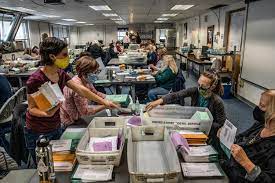
On the 6th of January, the counting of votes of the Electoral College happens supervised by the newly formed congress and representatives of all the parties. Each ballot box of a State is opened, and the votes of the members are counted.
The Presidential candidate receiving 270 votes is declared to be the President of America. The same process is followed for the post of Vice President. As the winner of these two posts belongs to the same party hence counting happens smoothly.
A scenario can arise where both of the candidates get 269 votes, and suppose there are more than two candidates and the highest number of votes obtained is 245. In that case, no one has achieved the magic figure of 270. In this scenario, the matter shifts towards the congress from the members of the Electoral College.
Contingent Election
In a situation where no Presidential Candidate has achieved the magical figure of 270 votes, the votes of the Electoral College get nullified and the President gets elected by the votes of the members of the House of Representatives in Congress.
The number of members in the House of Representatives is varied from different States. Like it has 53 members from California, 36 from Texas while 1 member from Wyoming 1 member from Alaska. To address this disparity, each State is considered to have only 1 vote. Thus the votes of 53 members of California in the House of Representatives are considered as 1 vote.
As the number of States in America is 50, these 50 votes decide the fate of the President, and a candidate winning 26 votes is elected as President of America. In any such scenario where no candidate has gained a maximum of 26 votes, the Elected Vice President takes over as President of America from 04th of March.
In case of a similar scenario for the election of the Vice President, the members of the Senate vote for the next Vice President. The candidate who gets 51 or more votes from the members of the Senate becomes the Vice President.
Two times in the 19th Century the President of America was elected by this way of contingent elections. Mostly the votes of the Electoral College elect the President of America.
Oath of the President
The entire process of electing the President of America gets completed on 6th Jan by either counting the Electoral College votes or by the way of contingent elections and the name of the candidate who has won the election is announced. The winning candidate takes the oath of President of America on 20th January or 21st January if 20th happens to fall on a Sunday.
These dates are fixed and written in the constitution of America and cannot be changed. This concludes the entire election process for the President of America.




 (1 votes, average: 5.00 out of 5)
(1 votes, average: 5.00 out of 5)


